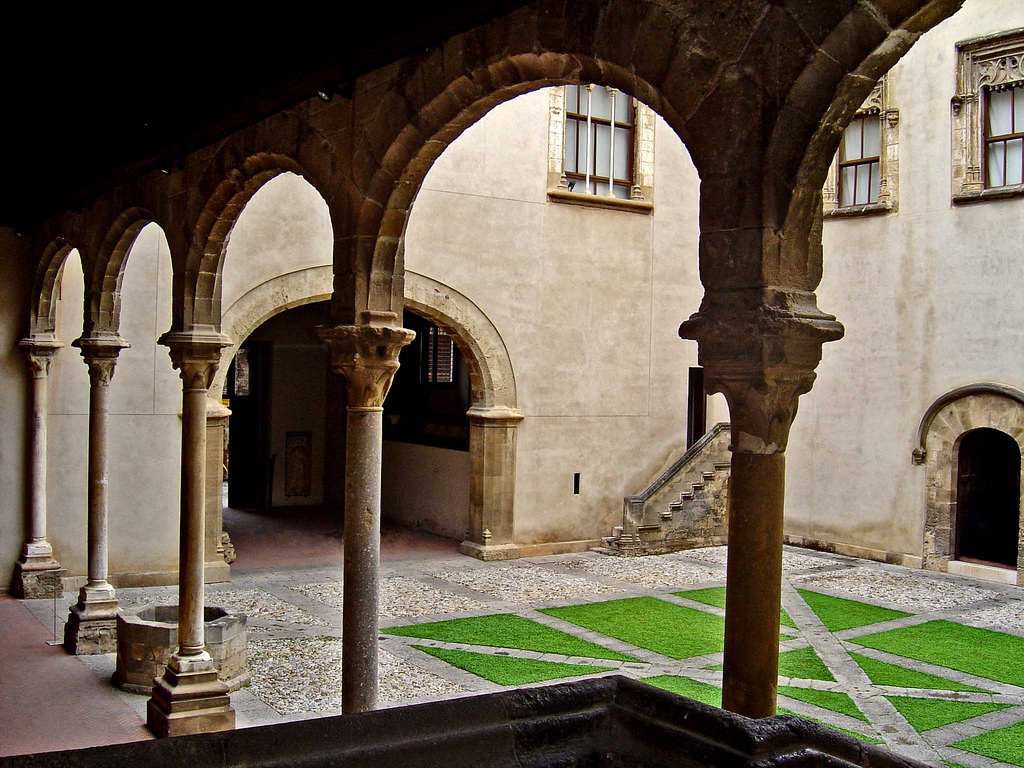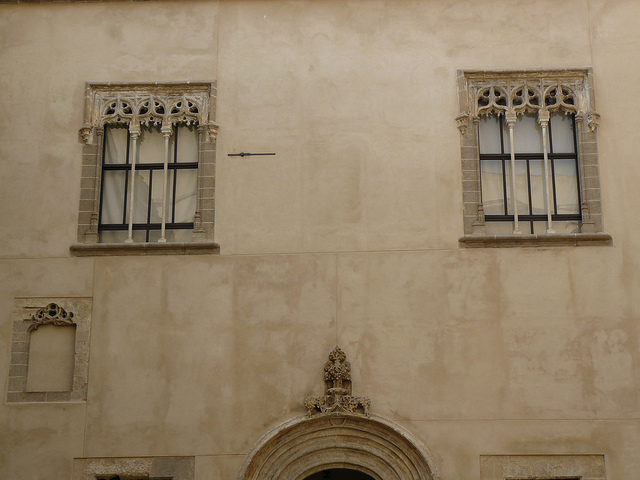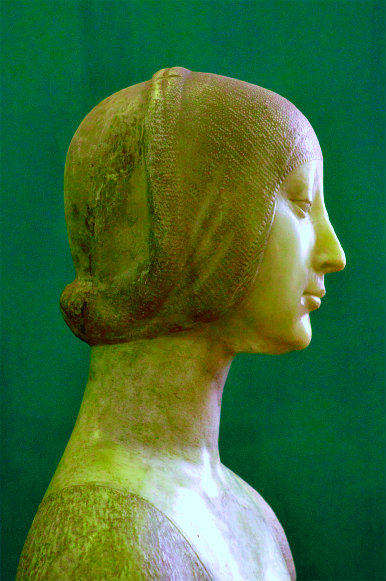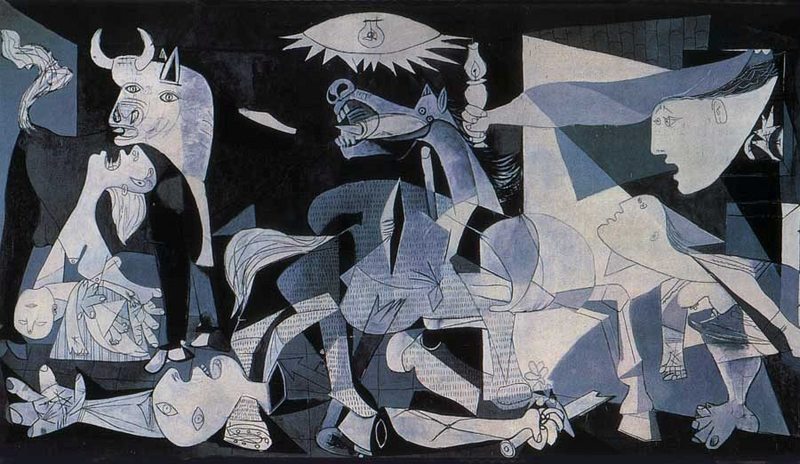A Museum with Art Like the Louvre’s Mona Lisa
In Palermo, Sicily, there is a museum that exhibits art as good as the best anywhere in Europe, even the Louvre. And it is housed in an extraordinary 15th century palace, a rare example of gothic-Catalan architecture, fully restored back in the 1950s by one of Italy’s best 20th century architects.
The museum is Palazzo Abatellis in Via Alloro, a suggestive old part of town, the Kalsa quarter near the sea. Here is the façade, adorned with original windows:
It was Carlo Scarpa, one of Italy’s best 20th Century architects who brought back to life the palace that had been gravely damaged during World War II – in fact, the whole town of Palermo has lost 80 percent of its buildings to war bombings. The town was bombarded twice at the end of the war; first there was an American wave, then a German one and both centered on the port area where all the ancient, more important palaces were located. That left very little standing.
The art in that museum measures up to the best in Europe, three pieces in particular. Here is one, the first you see as you enter the gallery: a magnificent alabaster head of Eleanor of Aragon by an unknown artist. Many feel her smile is as beautiful and enigmatic as the Mona Lisa’s – but I prefer her profile:
The next high point, after much remarkable artwork though none as memorable as this one, is Antonello da Messina’s reading virgin. This is an extraordinary rendering of a musing young woman as she faces her unique destiny:
And then, at the end of the visit, prepare for a visual shock. You find yourself at the foot of a huge fresco towering over you, so big that it is composed of four pieces occupying a whole wall (it is in fact 6 by 6.4 meters). Called Il Trionfo della Morte, The Triumph of Death (a common theme in 14th century Europe), it used to adorn the entrance of a hospital – I’m not sure to what extent patients felt uplifted by it… Nobody knows who painted it, but it is an absolute world masterpiece, judge for yourself:
To get the full impact, you need to go there and actually stand in front of it. And the museum obliges: visitors are given the opportunity to climb up to a loggia and see the fresco up close, frontally, from the first floor.
Alas, no digital image does justice to it, though one can perceive, in spite of the limitations of digital reproduction, the raw violence, the irony and beauty of it, a “terrible beauty” to use Yeats’ phrase. Just take a close look at the death horse:
Look at the horse’s head. Reminds you of anything? Yes, Picasso’s famous Guernica painting – except the head is turned the other way:
The same gaping mouth, spitting violence…















